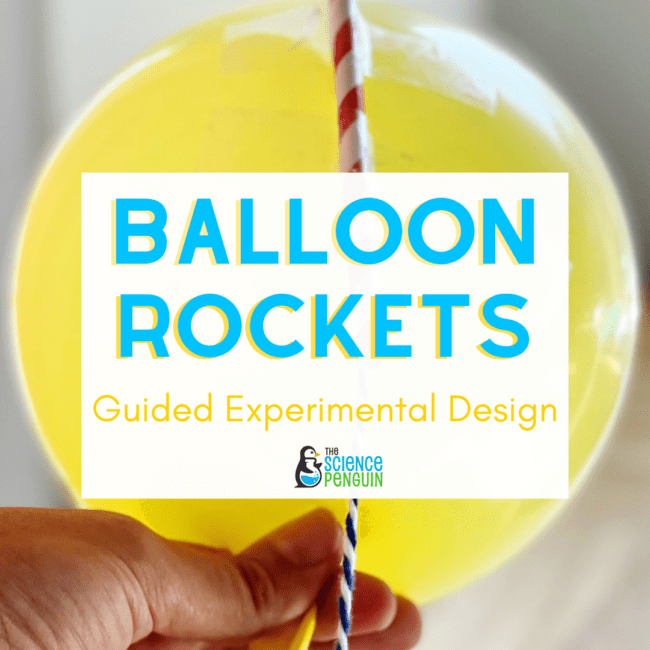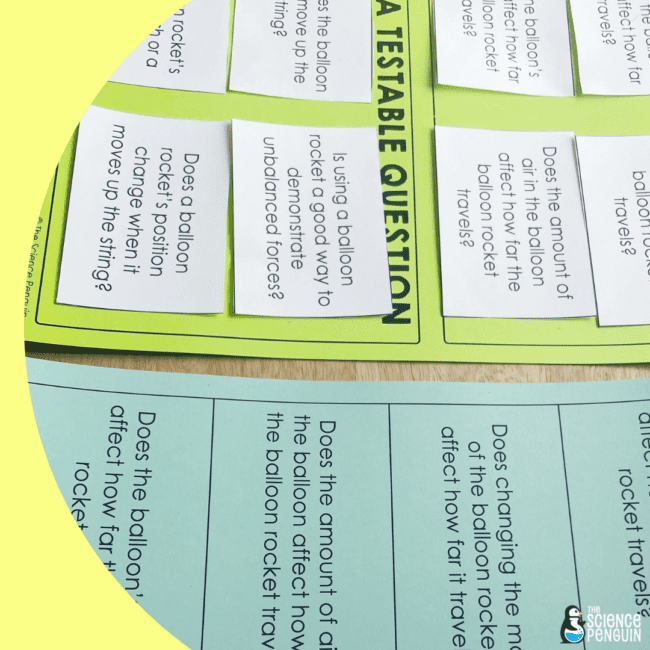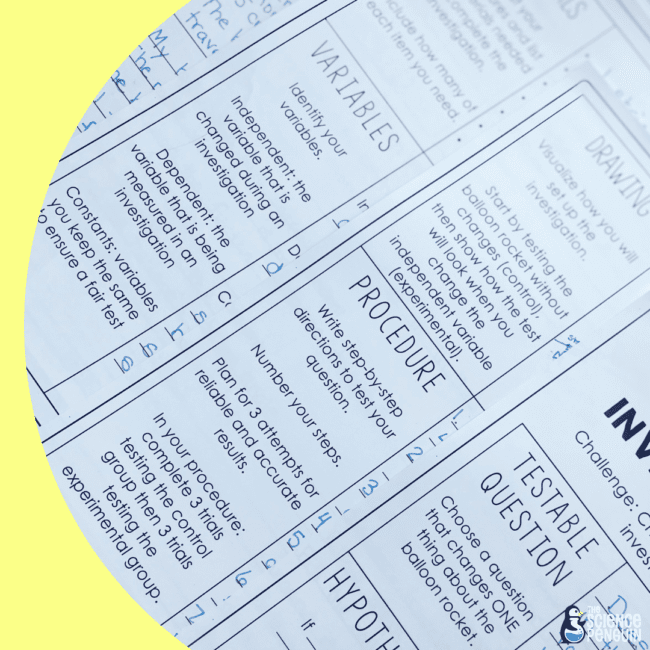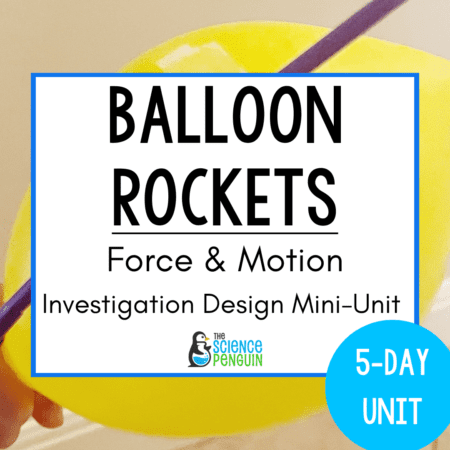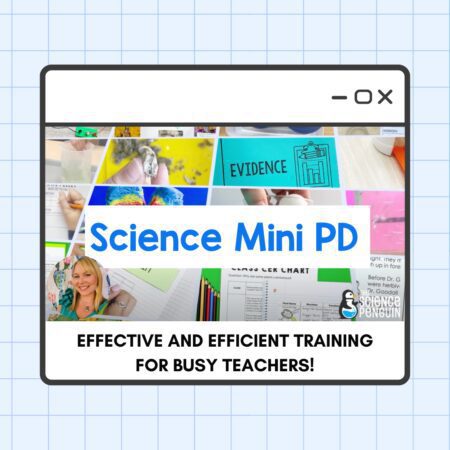Guiding your fifth graders to craft their own scientific investigation for force and motion can be a challenge, but we’ve got a solution to simplify the process for you!
According to the TEKS, 5th grade students should be designing their own simple experimental investigations in groups. They’ll frame a question, formulate a hypothesis and a plan, implement their investigation and gather data, then draw their conclusions.
Some teachers like to have students doing any kind of experiment they want. If you’re comfortable with this and feel ready for the challenge, that’s fantastic!
However, if that feels like biting off more than you can chew, no sweat! You can still provide your students with a rich experimental design experience that offers choice, but with a few guidelines.
Let me show you how!
1. Demonstrate a force and motion phenomenon
Show students how a balloon rocket works. It starts low then rushes up a string as air is released. Kids always think this is pretty cool and have a lot of questions about it.
Students record observations about force, position, and motion.
Then students list ways the balloon rocket system could be changed. This list will later help lead to writing a testable question!
Teams sort 8 questions related to balloon rockets as testable questions or not testable questions.
Finally, each team develops a testable question changing one variable of the balloon rocket.
There will be several different independent variables your class is testing, but all will be related to balloon rockets so it’s easy to prepare your materials and guide students through the process.
2. Guide students through hypothesizing and planning
Review independent and dependent variables in force and motion using the Variables Mat and cards.
Then, teams use the guided packet to design their investigation.
- They write their question from the previous day and craft a hypothesis.
- They draw what the investigation setup will look like to help them visualize.
- Then they can identify materials and variables and write their procedure.
- The last step before conducting the investigation is setting up the data table.
The packet helps you provide guidance for each aspect of the experiment.
4. Reinforce vocabulary and evaluate
The teams conducted their investigations. But did they learn about force and motion? Do they understand variables in a simple experimental investigation?
Here’s your follow-up!
Review the vocabulary cards and ask students to complete their individual vocabulary charts.
Then, provide the 5-question multiple choice quiz to determine how well students understand the content and scientific practices from this unit.
Finally, have students complete a differentiated open response related to the balloon rocket with evidence and reasoning for the presented claim.
You’ve totally got this. Let us help you guide your students through this fun and scientific process!
Purchase the Unit
See it in TpT: Balloon Rockets Investigation Design Mini-Unit
Find it in your bundle: 5th Grade Science Bundle {Texas Edition}
5th Grade Force and Motion TEKS for implementation in 2024
5.7A investigate and explain how equal and unequal forces acting on an object cause patterns of motion and transfer of energy
5.7B design a simple experimental investigation that tests the effect of force on an object in a system such as a car on a ramp or a balloon rocket on a string
Does it work for the current TEKS too? Yes!
Sign up for the Free Resource Library
This is an exclusive library of 40+ science printables, labs, activities, and games for grades 3-6. Sign up with your personal email and check your email for immediate access.

